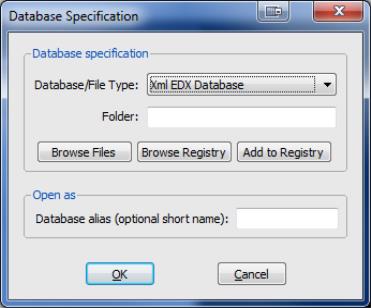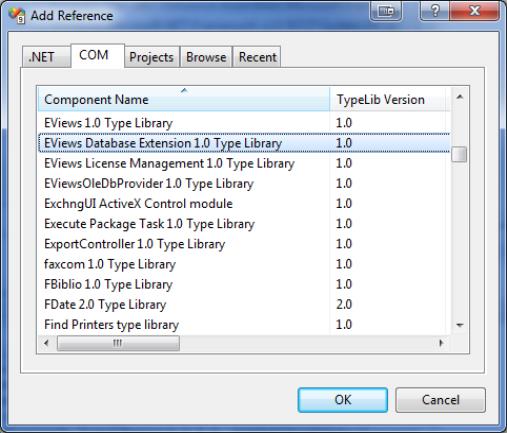EViews Database Extension Interface
EViews offers built-in support for a handful of foreign database formats (
e.g. DataStream, Haver, FRED,
etc.), providing users direct access to data in these formats via the standard EViews database interface (
“Foreign Format Databases”).
If data reside in unsupported database formats, users can resort to ODBC (if an ODBC driver was available) or using an intermediate file format (such as XLS, CSV or HTML) or the Windows clipboard to exchange data. These approaches are less convenient than working with the standard interface, and there are a number of limitations, including the inability to obtain additional attributes such as source, units, etc. alongside observation values and the fact that data brought into EViews using these approaches cannot be "linked” back to the source to allow for automatic refreshes when a workfile is loaded.
To overcome these limitations, EViews supports the EViews Database Extension (EDX) Interface which allows an external data source that implements this interface to be opened from within EViews and used just like an EViews database.
Programmers who implement a database extension for an external database format can extend EViews so that:
• an EViews user can ask what objects the external database contains
• an EViews user can read data objects from the external database
• an EViews user can write data objects to the external database
• an EViews user can browse through the contents of the external database using a custom graphical interface developed specifically for the data source
Using EDX, a developer can offer EViews access to a external database that is indistinguishable from built-in access to data sources. Notably, EViews built-in support for connecting to the U.S. Energy Information Administration (EIA) on-line databases was developed using an EDX interface to the EIA API.
More precisely, EDX is a set of COM interfaces. Supporting a new format involves creating a small library (usually housed in a DLL) that contains COM objects that implement these interfaces. The library can be developed in many different programming environments including native C++ and Microsoft .NET. These COM objects are used by EViews to interact with the underlying database.
For details and extensive examples of the EDX interface, please see the whitepaper
EViews Database Extension Interface Release x.x (available from our website
www.eviews.com/download/download.html).



